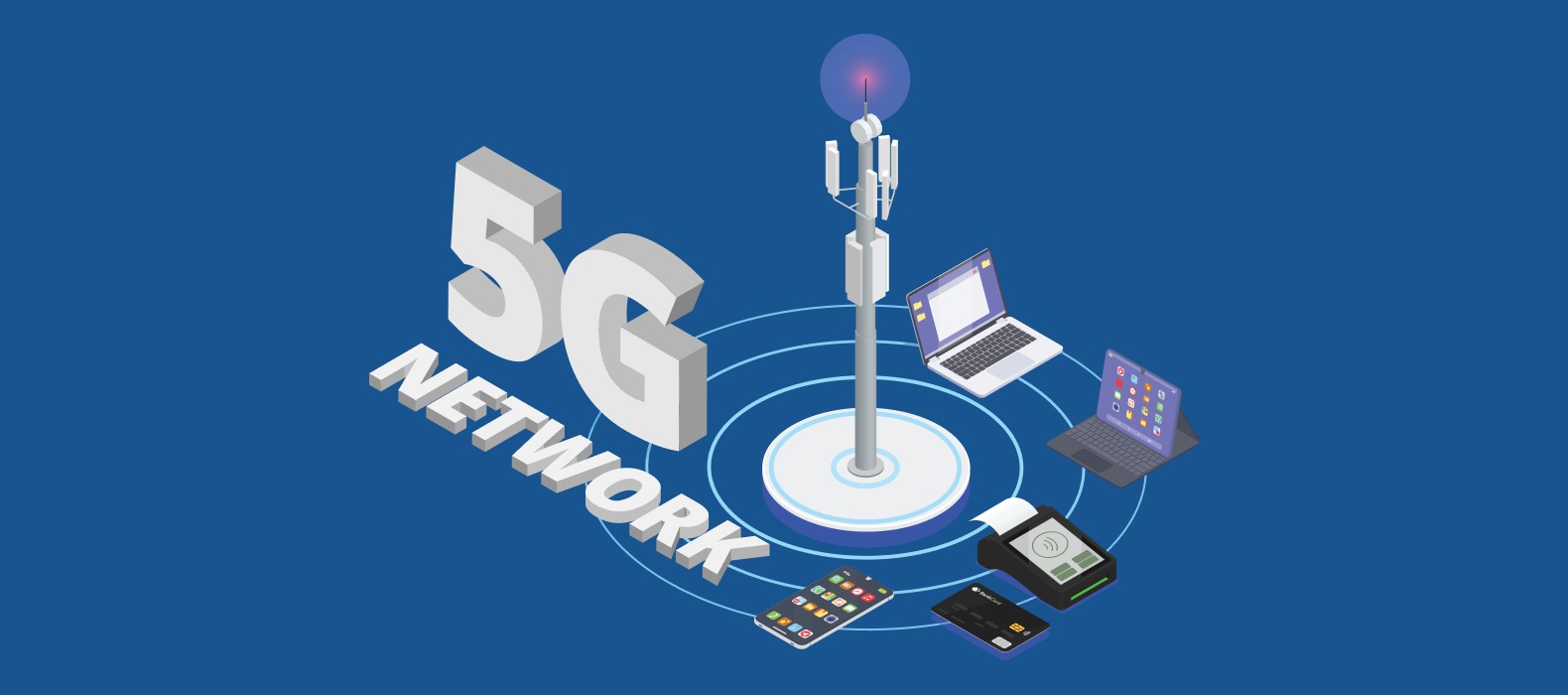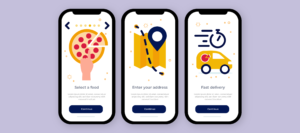Could you ever envision being able to send millions of GB of data to an infinite number of linked devices around the globe in the space of a single eyeblink? Yes, it’s now possible due to the fifth-generation wireless cellular network, or 5G technology, which is bringing a new era of technological transformation.
After much discussion and controversy, 5G is now here. Being one of the most potent trends in mobile app development, it can potentially transform a few businesses and the entire world. Consumers aren’t the only ones excited; tech specialists, developers, businesses, and many others are.
With the 5G reveal now underway, the 5G network is projected to run in more than 1.4 billion devices by 2025, accounting for 15% of the global mobile industry! Without a doubt, 5G has great potential and has the power to completely change the way organizations operate.
Although this is only one of many benefits that will fundamentally change our life, the secret to its prowess is its tremendous speed (10X quicker than 4G!) to transport data across different devices. And this revolution is not excluding smartphone apps. The enhanced cellular network that is most likely to spark the fourth industrial revolution has begun to have an impact on developers all around the world.
Are you curious to learn how the field of mobile app development will be significantly impacted by 5G technology? Hold on because this article will cover all aspects of this fascinating wireless breakthrough in great detail!
5G Technology: A Comprehensive Overview
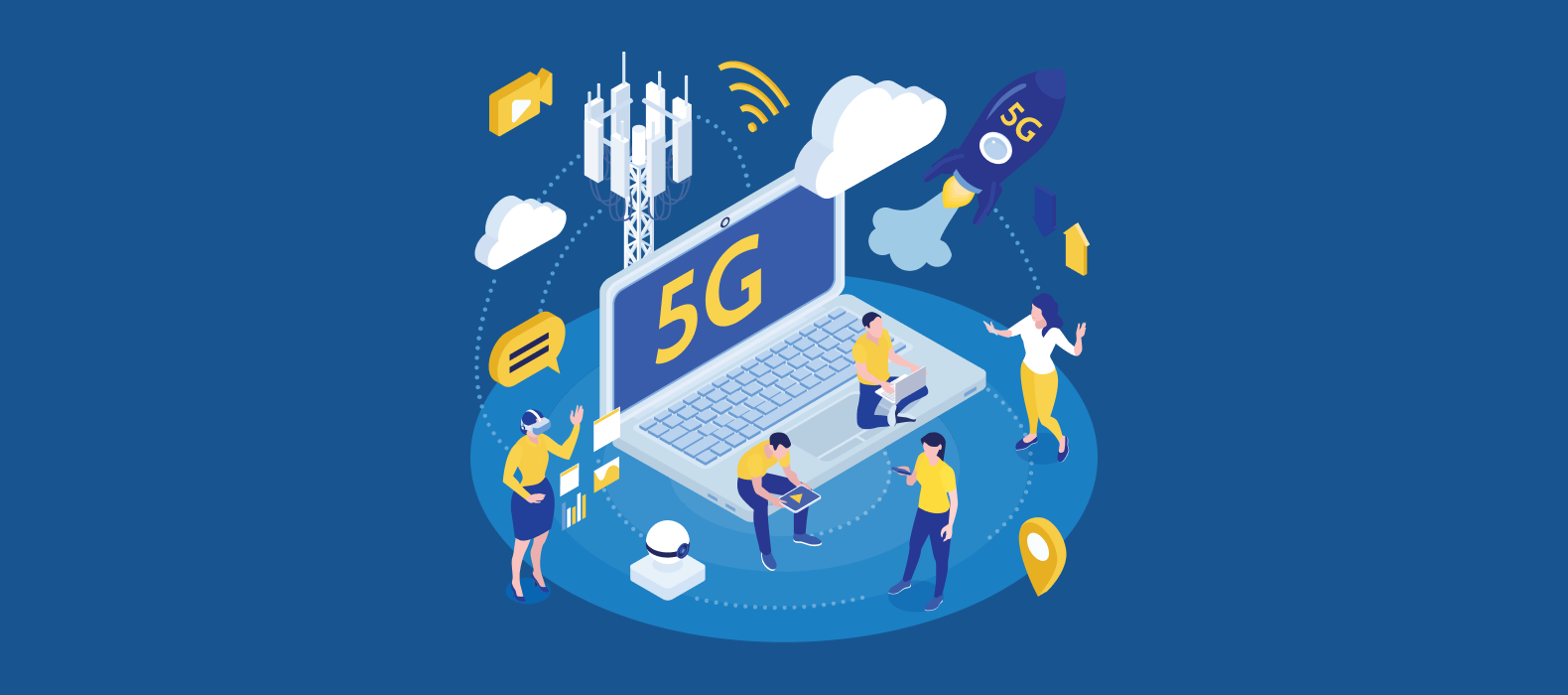
5G technology is the fifth generation of mobile network technology that offers faster data transfer speeds, lower latency, and increased network capacity compared to previous generations. It supports various applications, such as high-quality video streaming, virtual reality, and Internet of Things (IoT) devices.
Unlike its predecessors, 5G technology operates on a higher frequency range and uses advanced antenna technology to increase network coverage and speed. It also utilizes software-defined networking (SDN) and network function virtualization (NFV) to provide greater flexibility and scalability.
With 5G technology, users can expect to experience download speeds of up to 20 Gbps, significantly faster than the current 4G technology that provides a maximum speed of 1 Gbps. This technology is expected to revolutionize various industries, including healthcare, transportation, and entertainment.
Advantages of 5G network over 4G
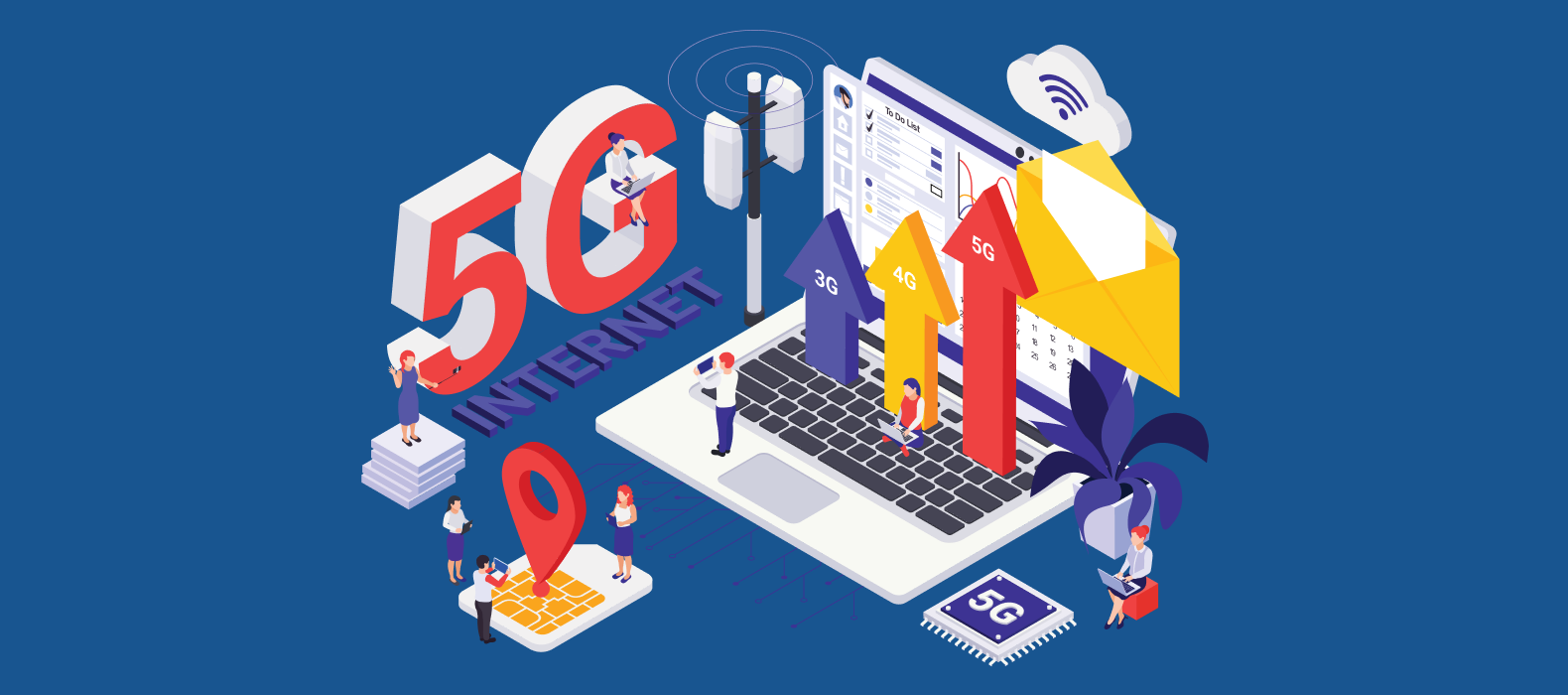
There are several advantages of a 5G network over 4G, including:
- Faster speeds: 5G technology offers faster data transfer speeds than 4G, with theoretical download speeds of up to 20 Gbps. This means downloading and uploading large files, streaming high-quality video, and using bandwidth-intensive applications will be much faster on 5G than on 4G.
- Lower latency: 5G technology has much lower latency than 4G, which means there is less delay in data transfer between devices. This is important for real-time applications like gaming, virtual reality, and autonomous vehicles, where even a small delay can cause significant problems.
- Increased network capacity: 5G technology uses advanced antenna technology to increase network capacity, which means more devices can connect to the network without causing congestion or slowdowns. This is important for the growing number of IoT devices that require a reliable and fast network connection.
- Better coverage: 5G technology uses higher frequency bands than 4G, which means it can transmit more data over shorter distances. This allows 5G networks to provide better coverage in densely populated areas and rural areas where installing physical infrastructure may be more difficult.
- Improved energy efficiency: 5G technology is designed to be more energy-efficient than 4G, which means it can reduce the carbon footprint of wireless networks. This is important as the demand for wireless data grows and energy consumption becomes a more significant concern.
- Enhanced security: 5G offers enhanced security features, including improved encryption and authentication, which make it more difficult for hackers to access data transmitted over the network.
- Support for IoT devices: 5G is designed to support the massive number of connected IoT devices expected to come online in the coming years. This means connecting and managing many devices, including sensors, cameras, and other IoT devices, will be easier.
- Edge computing: 5G enables edge computing, which means that processing and storage can be moved closer to the network’s edge, where data is generated. This reduces latency and enables real-time processing of data, which is critical for applications like autonomous vehicles and industrial automation.
- Network slicing: 5G allows for network slicing, which means that a single physical network can be divided into multiple virtual networks, each with its unique characteristics, such as speed, latency, and security. This allows network operators to offer customized services to customers based on their specific needs.
How is 5G Different from 3G and 4G Technology?
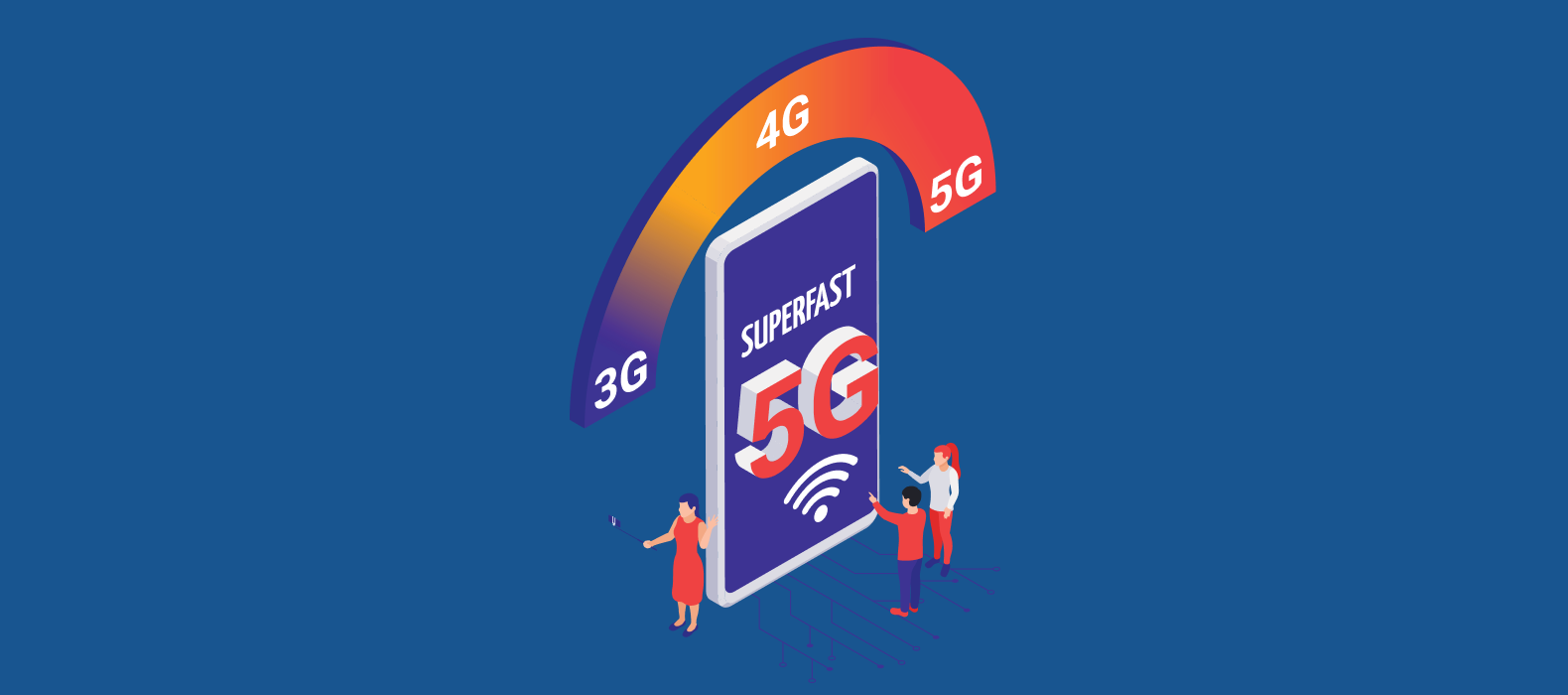
Here’s a comparison table of 5G, 4G, and 3G technologies:
| Basics | 5G | 4G | 3G |
| Data transfer speed | Up to 20 Gbps | Up to 1 Gbps | Up to 42 Mbps |
| Latency | Less than 1 ms | 10-30 ms | 100-500 ms |
| Network capacity | Supports up to 1 million devices per square kilometer | Supports up to 100,000 devices per square kilometer | Supports up to 1,000 devices per square kilometer |
| Coverage area | Short-range, high-bandwidth coverage in densely populated areas | Wider coverage, but lower speeds in rural areas | Limited coverage in rural areas |
| Frequency bands | High-frequency millimeter wave bands (mmWave) and mid-frequency bands | Lower frequency bands | Lower frequency bands |
| Applications | Augmented reality, virtual reality, autonomous vehicles, IoT, and more | Video streaming, online gaming, and other high-bandwidth applications | Basic internet browsing, email, and voice calls |
Overall, 5G technology provides much faster speeds, lower latency, and greater network capacity than 4G and 3G technologies, enabling new use cases and applications that were not possible before.
How Will 5G Networks Affect Mobile Apps?
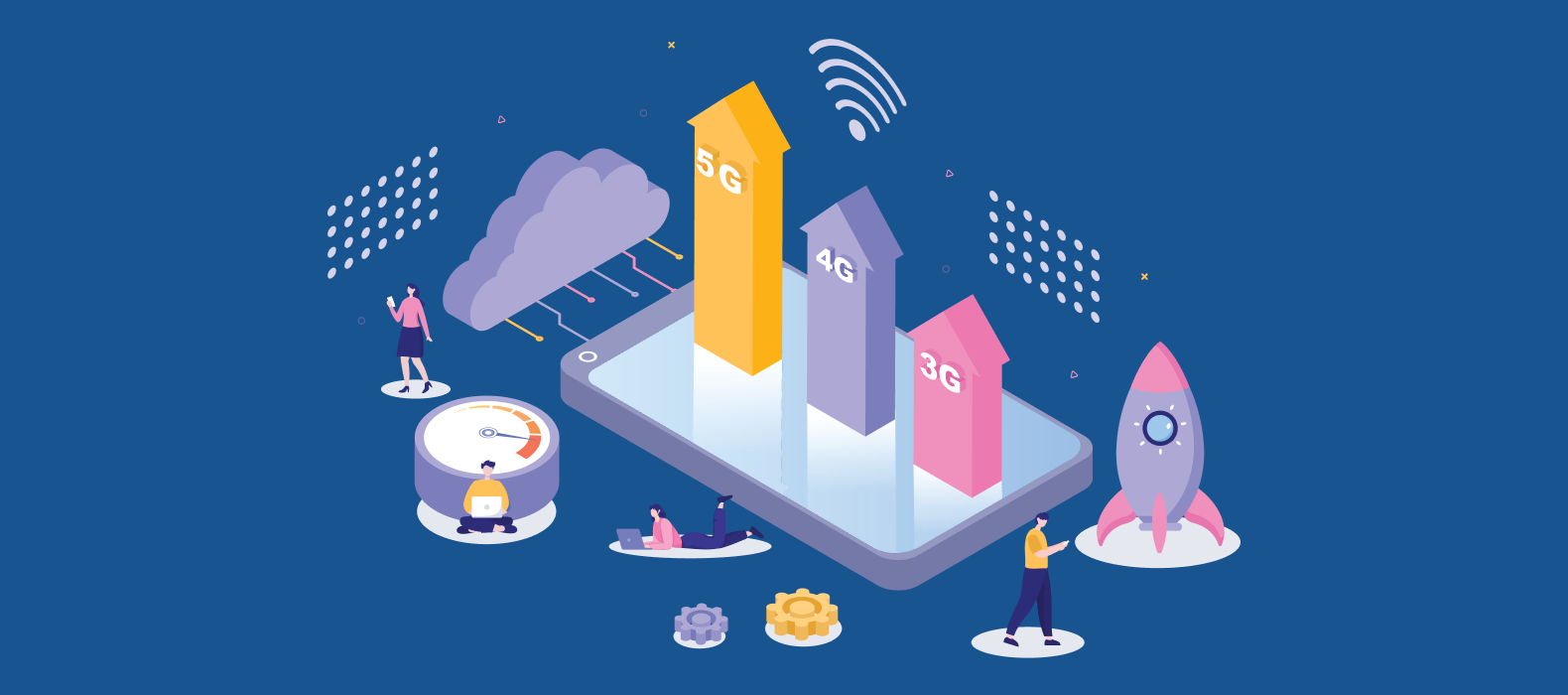
5G networks are expected to significantly impact mobile apps, enabling new capabilities and experiences that were impossible with previous generations of mobile networks. Here are some ways that 5G networks are expected to affect mobile apps:
- Faster app download and updates: With 5G’s faster download speeds, mobile apps can be downloaded and updated much more quickly. This will lead to a better user experience and make it easier for users to try out new apps.
- Improved performance: 5G’s low latency will allow apps to perform more smoothly, with fewer delays and buffering. This will be especially noticeable in apps that require real-time data transmissions, such as video conferencing and gaming apps.
- New app use cases: 5G’s high-speed connectivity and low latency will enable new use cases for mobile apps, such as augmented and virtual reality. This will allow for more immersive and interactive experiences.
- More data-intensive apps: With 5G’s increased network capacity, mobile apps can transmit and receive much larger data. This will lead to the development of more data-intensive apps, such as 4K video streaming and high-resolution image editing apps.
- More IoT apps: With 5G’s ability to support many connected devices, there will be more opportunities for IoT apps that require a fast and reliable network connection. This will allow for more advanced home automation, smart city, and industrial IoT applications.
- Smarter apps with AI and machine learning: With increased speed and capacity, 5G networks can support more advanced artificial intelligence (AI) and machine learning (ML) algorithms on mobile devices. This could enable more personalized and intelligent apps to perform real-time language translation, image recognition, and voice recognition.
- More efficient apps with edge computing: Edge computing is a technology that allows data processing and storage to be done closer to the device or application rather than on a centralized server. With 5G networks, edge computing can be done much faster, enabling more efficient and faster mobile apps.
- Improved user engagement: With faster speeds and improved performance, 5G networks could help to improve user engagement with mobile apps. For example, video streaming apps could offer higher-quality video, and online shopping apps could offer more interactive and immersive experiences.
Therefore, 5G networks are expected to enable a new generation of mobile apps that offer faster, more responsive, and more immersive experiences. Mobile app developers will need to adapt to these changes by optimizing their apps for 5G networks and taking advantage of the new capabilities that they provide.
Impact of 5G on App Trends

The impact of 5G on app trends is expected to be significant. The faster speeds, lower latency, and more reliable connections offered by 5G networks will enable the development of more sophisticated and data-intensive apps. Here are some potential impacts:
1. Improved User Experience:
With 5G technology, apps will be able to provide a much smoother and faster experience for users. Streaming, downloading, and uploading content will be much quicker, and latency will be reduced, leading to a more responsive and engaging user experience. This could lead to development of more engaging and interactive apps that rely on high-quality multimedia content, such as video and audio.
Furthermore, 5G’s increased capacity and reliability could allow for the development of new types of apps that require real-time data processing, such as virtual and augmented reality applications, thereby providing users with even more immersive and personalized experiences. Ultimately, the improved user experience offered by 5G could revolutionize how we interact with apps and the world around us.
2. Augmented and Virtual Reality Apps:
The rollout of 5G technology is expected to significantly impact the development of Augmented Reality (AR) and Virtual Reality (VR) apps. With the high-speed and low-latency capabilities of 5G, AR and VR apps are expected to perform much faster and more efficiently, enabling more seamless and immersive experiences.
5G networks will also enable real-time processing and streaming of large amounts of data, making it possible for AR and VR apps to deliver high-quality, interactive content on a massive scale. This will likely lead to the developing of new AR and VR apps that rely on high-quality multimedia content, such as live streaming of sports events and concerts and immersive gaming experiences.
3. Gaming Apps:
Gaming apps require high data transfer and low latency to provide an immersive gaming experience. With 5G technology, developers can create faster, more responsive gaming apps with more realistic graphics. This could lead to the development of new types of multiplayer and augmented reality gaming apps that require real-time data processing and high-quality multimedia content. Additionally, 5G’s enhanced user experience could lead to more engaging and immersive gaming experiences, making it a game-changer for the gaming industry.
4. Internet of Things (IoT) Apps:
The emergence of 5G technology is expected to significantly impact the development of Internet of Things (IoT) apps. With its faster speeds and lower latency, 5G is expected to enable more efficient communication between IoT devices and platforms, leading to more reliable and responsive IoT apps.
Additionally, the increased capacity of 5G networks will allow for connecting a larger number of devices, paving the way for developing more complex and sophisticated IoT applications. This could lead to new business opportunities in smart homes, healthcare, and industrial automation. Overall, 5G is expected to be a key enabler of the growth of IoT app trends in the coming years.
5. Real-Time Communication Apps:
Apps that require real-time communication, such as video conferencing, will benefit from 5G technology. The low latency and fast speeds of 5G networks will enable high-quality video conferencing with fewer disruptions and delays. This could lead to the development of new types of real-time communication apps that rely on high-quality video and audio content, such as virtual meetings and teleconferencing.
Additionally, the increased speed and capacity of 5G networks could enable the development of new business models for real-time communication apps, such as pay-per-minute or subscription-based models. Overall, 5G will likely accelerate the growth and evolution of real-time communication apps, making them even more essential for personal and business communication.
Conclusion
To cut a long story short, 5G was created as the ultimate wireless communication solution. However, it is still in its infancy, and there are numerous details to work out. It’s true that several drawbacks accompany its advantages, such as the increased risk of data breaches, various software versions, etc., but isn’t that true of every technology?
Although 5G is currently the fastest network in the world, there is still a lot of skepticism about it. Both users and developers will benefit from 5G, a technology that is here to stay. But where can you get developers with such agility who can flawlessly integrate your chosen apps with the power of 5G?
FAQs
Question 1: What is 5G technology?
5G stands for fifth-generation wireless technology. The latest generation of mobile communication networks promises to offer faster data transfer speeds, lower latency, and greater capacity than previous generations. 5G uses higher radio frequencies and advanced antenna technologies to achieve these improvements.
Question 2:What are the major benefits of 5G technology?
Some of the major benefits of 5G technology include the following:
- Faster data transfer speeds
- Lower Latency
- Greater capacity
- Improved reliability
Question 3: What impact will 5G technology have on app trends in 2023?
The increased speed and capacity of 5G networks will significantly impact app trends in 2023. Some potential trends include:
- Increased use of streaming apps
- Greater use of AR and VR apps
- More advanced mobile gaming
- Increased use of IoT devices
Question 4: How is 5G technology different from 4G?
5G technology uses higher frequency bands than 4G, allowing faster data transfer rates and better connectivity. It also has reduced latency, meaning there is less delay between sending and receiving data. Additionally, 5G can support more devices than 4G, which is important for the Internet of Things (IoT) growth.
Question 5: When will 5G networks be widely available?
5G networks are being rolled out worldwide, but their availability varies by country and region. Some countries have deployed 5G networks on a limited basis, while others are still deploying them. By 2023, it is expected that 5G networks will be more widely available, but their availability may still be limited in some areas.

